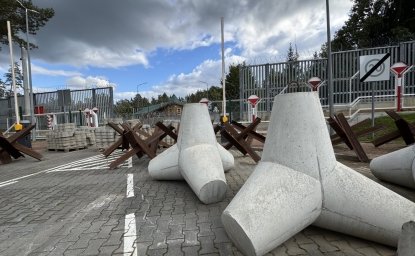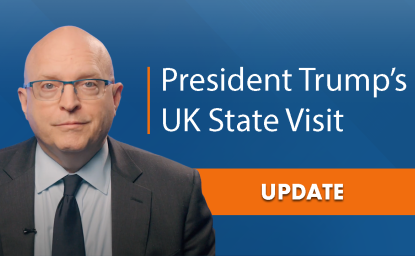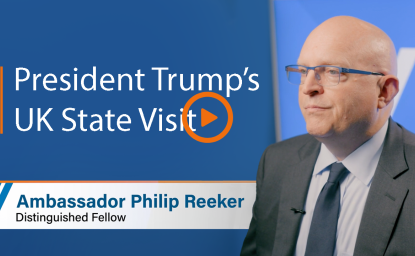By John J. Audley
Over the past year, President Clinton has challenged his administration to develop a plan to "put a human face on the global economy" through greater consideration of labor and environmental concerns in trade negotiations and more openness in World Trade Organization (WTO) proceedings. Clinton believes strongly that "spirited competition among nations" should never become "a race to the bottom in environmental protection." However, integrating sustainable development into trade negotiations is a relatively new concept, one that has sparked anger from some, fear from others.
During the December 1999 Seattle WTO Ministerial, the administration worked hard to meet this challenge but failed to secure the consensus necessary to realize Clinton's vision. As a result, the United States must redouble its efforts to work with other countries to build a consensus to integrate the principles of sustainable development into all aspects of trade negotiations.
Taking stock
The United States began its effort to integrate environment into trade by acknowledging that most countries reject attempts to link environmental issues to trade negotiations. Some countries believe that linking trade liberalization to high standards for environmental protection will inhibit the economic growth they desperately need. Others resist the imposition of a more powerful country's environmental priorities as a new form of "environmental colonialism." Finally, many countries worry about "green protectionism" -- protectionism disguised as environmental legislation.
The WTO, it should be noted, has already begun to struggle with the challenge of integrating environment into trade. The concluding agreements of the Uruguay Round negotiations of the General Agreements on Tariffs and Trade, which created the WTO, included a commitment on the part of WTO member countries to pursue economic growth in a manner consistent with the principles of sustainable development. The members agreed in 1994 to establish the WTO Committee on Trade and Environment (CTE), which began to study the trade and environment linkage. Over the past five years, the WTO has taken several steps toward greater accountability to the public and balance between trade and environmental priorities. For example, timely release of documents has become commonplace. In addition, the WTO has established informal communications channels with civil society: the WTO Secretariat now meets regularly with nongovernmental organizations (NGOs) and has engaged in outreach to groups around the world.
While these steps are admittedly modest, their impact on the WTO's behavior has been significant. During the Seattle Ministerial, nearly 3,000 NGOs registered to attend the conference, which provided them with unprecedented access to delegation officials and negotiation updates. These changes have also had an impact on the WTO's substantive analysis. In a recent white paper entitled "Trade and the Environment," the WTO acknowledged that competitive forces caused by trade liberalization can put pressure on environmental regulations. It recognized that trade liberalization alone will not guarantee protection of the environment and improved living standards. It also argued that trade rules are the least effective means of protecting the environment from damages caused by human activity. It called for the simultaneous negotiation of stronger and more effective multilateral environmental agreements to help ensure that trade liberalization and environmental protection work collaboratively to promote better and healthier lives for all people.
One of the United States' objectives for the Seattle Ministerial was to build upon the progress toward integrating environment into trade already made by the WTO and its members. We knew that, to be successful, we had to acknowledge the legitimate concerns expressed by some regarding efforts to link trade liberalization to environmental protection. Countries should not hide behind protectionist policies masquerading as environmental laws. At the same time, they must not harm the environment in the name of trade liberalization. The path to meet the dual challenge of trade liberalization and enhanced environmental protection takes us forward toward a rule-based trading system that integrates fully enhanced environmental protection into trade liberalization, not backward toward liberalized commerce on the sole promise that more trade is always better.
Putting a human face on the global economy
Recognizing the huge task before us, the United States had proposed that countries adopt the following agenda for the environment during the Seattle Ministerial:
1. Improve transparency and accountability. The single most important environmental initiative the United States proposed during the ministerial was to improve the WTO's transparency and accountability for people around the world. Our plan to achieve this goal had two main components. First, as part of the five-year review of the Dispute Settlement Understanding (DSU), the United States sought to achieve the following goals:
* Allow people access to all government submissions.
* Permit affected parties to submit their own opinions to the dispute panel.
* Provide public access to the proceedings (not the deliberations).
* Ensure that all panel decisions are published immediately.
The second component of the transparency agenda was to secure a commitment from the WTO and its members to negotiate formal avenues for deliberations between the Secretariat and civil society. We offered no specific solution to this challenge but asked countries to commit to work together and create this channel by the end of the first year of formal negotiations.
For the United States, access to information and the opportunity to view proceedings is central to our system of government. Greater openness and accountability improves not only efforts to protect the environment, but also expands people's understanding of trade rules and institutional behavior. By listening to the advice and comments shared by interested parties, transparency also holds out the promise of improved rules and more responsive institutional behavior.
5. Expand capacity to set high standards. The second major environmental initiative was to address the need to improve environmental protection efforts worldwide. National and international environmental laws -- not trade agreements -- are the most effective vehicles for improving environmental protection.
The United States initiated two projects to help meet this challenge. First, we reviewed current U.S. international capacity-building assistance and found that many of the current projects overlap with the more narrow goals of trade liberalization. Sharing technology and resources to help governments better protect their air and water supplies, produce cleaner energy, and responsibly manage chemical materials and hazardous waste have both environmental and trade benefits.
Second, we proposed that the WTO members redouble their efforts to provide technical assistance to ensure that poorer countries are able to benefit fully from globalization. Working with many developing countries, the United States proposed improvements to the technical assistance agreement signed by trade ministers during the 1996 WTO Singapore Ministerial. The proposal called upon countries to work with citizens and local technical experts to prioritize their technical assistance needs. Working with other intergovernmental organizations such as the World Bank, the WTO and its members would then coordinate financial and technical resources to help countries meet their trade obligations.
6. Improve coordination and collaboration among intergovernmental organizations. Related to our proposal to emphasize technical assistance and enhance national environmental protection regimes, the United States proposed that the WTO and other intergovernmental organizations (IGOs) develop and maintain better working relations. The WTO is one of many IGOs whose work is essential to achieving a sustainable future. Promoting greater collaboration among these organizations will help them share their individual expertise and experience, thereby improving upon their individual policies. In particular, we were pleased with the announcement by the WTO and the United Nations Environment Program of the establishment of a formal working relationship. To promote stronger relations, President Clinton while in Seattle convened a meeting of the heads of the major IGOs. Greater collaboration among IGOs is an essential component of any comprehensive effort to promote sustainable development through trade liberalization.
7. Integrate environmental considerations into trade agreements. The final component of our agenda was to determine how to take environmental concerns into account throughout the course of negotiating trade agreements. In the United States, we believe that such efforts begin with an assessment of the potential effects of trade liberalization on the environment and living standards. Therefore, in November President Clinton signed an executive order committing the United States to perform environmental assessments of all major trade agreements.
In this new approach to trade policy, U.S. negotiation positions will have the benefit of information describing the potential environmental implications of specific trade negotiation objectives. The United States recognizes that much work needs to be done before such assessments can provide negotiators with the kind of detail they need to address some of the thorniest trade and environment problems. Nonetheless, making this practice part of all U.S. negotiations is an important first step. The United States also acknowledges that many other countries have chosen to perform their own reviews, and we hope that this information will be shared among countries as we improve upon the methodologies of environmental reviews of trade agreements.
While environmental reviews of trade agreements may still be in their infancy, the United States determined that there are ways to use trade rules now as positive vehicles for environmental protection. For example, we know that properly negotiated trade rules can help eliminate subsidies that harm the environment and encourage resource misuse and abuse. Therefore, the United States identified as key "win-win" objectives for the negotiations the elimination of subsidies that promote overfishing of our global fish stocks and the elimination of harmful agriculture subsidies. We are also committed to eliminating tariffs that complicate trade in environmental goods and services.
Finally, the United States proposed that the WTO Committee on Trade and Environment (CTE) serve as the needed venue for countries to share information on trade and the environmental issues and for exploring ways to promote sustainable development. We did not propose that the CTE interfere with government-to-government negotiations. Instead, we stressed that, to be credible, the CTE must eventually become a forum where people and governments exchange views on emerging trade and environment issues to assist in building the consensus essential to help the WTO make difficult trade policy decisions.
A long-term vision
Our proposed plan to integrate the environment into trade policy-making is a long-term vision, which will not begin to ease the tensions between trade liberalization and environmental protection immediately. Governments will (and should) continue to use WTO rules to determine whether or not another country's laws are designed to achieve legitimate policy objectives, or to protect domestic industries from international competition. Governments should also continue to take appropriate steps to protect national and international natural resources to ensure that future generations benefit fully from a healthy planet.
Explore More
Browse Insights & Analysis
On the Border of War

Update: Ambassador Reeker on President Trump’s UK State Visit

